Have you been struggling to keep tomatoes fresh longer, and you can’t find the best tips to keep them fresh? Tomatoes have numerous health benefits, which encourage people to consume them in large quantities; however, the inconvenience arises when it comes to storing them, hoping to keep them fresh longer. After much research on the internet, we found out these storage methods, which help extend the life of your tomatoes, including freezing, canning, and using baking soda.
Down below, you can find very useful tips that people often tried and get impressed with…
Why Proper Tomato Storage Matters
Tomatoes enhance various meals, but they spoil quickly, causing hesitation when buying in large quantities. Since our role is to find solutions for your daily small problems, in this Article, we come up with a simple secret to effectively keep tomatoes fresh, so you can buy them without worry.
By searching briefly on the net, we found out for you the most effective methods to keep your tomatoes so fresh for a long period. So you don’t need to search more…
Describing these methods, we will speak flowingly and directly to avoid wasting time and proceed directly to action.
Method 1: Freezing Tomatoes in an Airtight Bag
Wash the tomatoes first. Cut them into pieces and place them in an airtight freezer bag. Close the bag, leaving a small slit for a straw. Suck out all the air and seal the bag to create a vacuum.
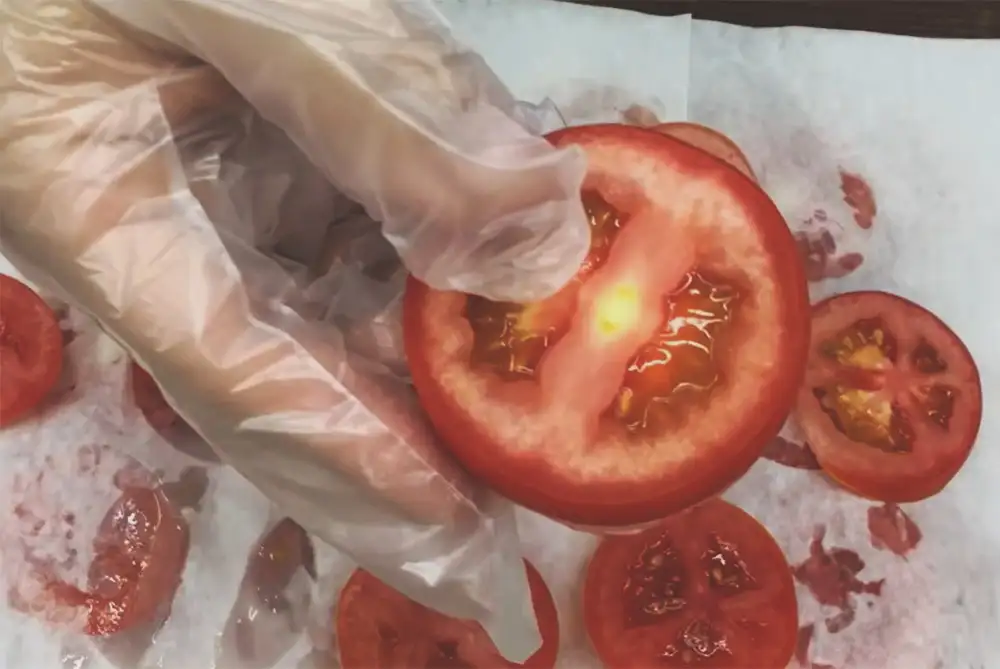
Tomatoes will keep for months when frozen using this method. Whole tomatoes can also be frozen this way.
Method 2: Storing Tomatoes in Ziploc Bags
First, wash tomatoes properly to remove bacteria without damaging their delicate skin. Use a bowl of clean water and add about 2 tablespoons of white vinegar. A few drops of fresh lemon or a little iodine solution will also work well if there’s no vinegar. White vinegar is mildly acidic, enough to safely kill bacteria and microorganisms that stick to the skin of vegetables.
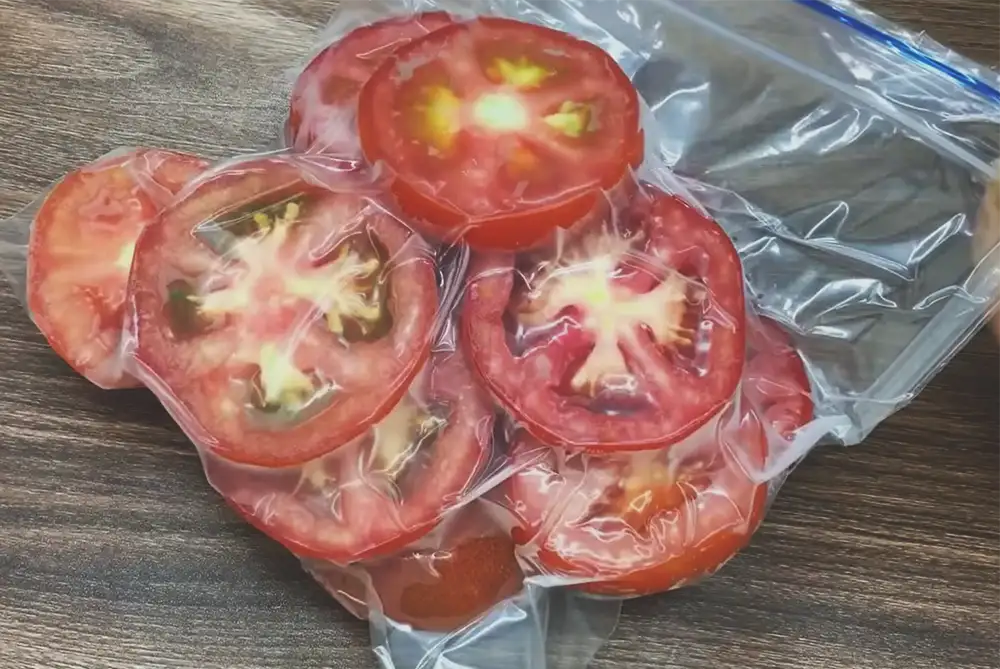
Soaking tomatoes in vinegar water helps remove dirt from soil or traces from human hands and is health-friendly, completely different from soaps or industrial detergents. After 5 minutes of soaking, just rinse gently with clean water and dry each fruit carefully with a paper towel or clean towel.
If water accumulates, especially at the bottom, tomatoes will spoil faster than you think. Once everything is completely dry, you’re ready for the next step.
Sorting Tomatoes by Ripeness
Once your tomatoes are washed and dried, sort them into different Ziploc bags according to their ripeness. This is very important if you want to keep your tomatoes for a long time without them spoiling too soon. Divide them into two groups: firm, unripe tomatoes and soft, fully red tomatoes.
Storing in the Refrigerator
Place a kitchen towel at the bottom of the Ziploc bag. This layer of towel will help absorb the natural moisture from the tomatoes. Moisture is a major cause of mold and spoilage, especially in a closed environment like a Ziploc bag.
Place tomatoes in bags, then remove as much air as possible—using a straw or a cool hair dryer nozzle—to slow oxidation. Seal the bags tightly. Store firm tomatoes at the bottom and soft ones at the top of the fridge to prevent bruising and facilitate easy use of ripe ones, reducing waste. Line the crisper drawer with a dry towel to absorb moisture.
If tomatoes remain fresh after a month without spoilage, this method can be repeated to extend storage.
This method is especially useful when you can’t go to the market often or when you want to stock up on tomatoes while still maintaining their quality.
Method 3: Defrosting Tomatoes
Make two small cuts on each tomato. Pour boiling water over it and let it sit for about 30 seconds. Pour boiling water over it again. Let it sit for about 30 seconds, then peel and chop it.
Add a clove of garlic and a little extra virgin olive oil. Put the tomatoes in and cook for about 10 minutes from the time the water boils. The tomato sauce is ready. Fresh tomatoes are more flavorful than unfrozen tomatoes.
Method 4: Preserving Tomatoes by Taping Stems
When buying fresh tomatoes, avoid washing them right away, as water can soften the skin and make them more susceptible to damage. Place each tomato in a basket or tray with the stem facing down to reduce water loss and help them ripen evenly.
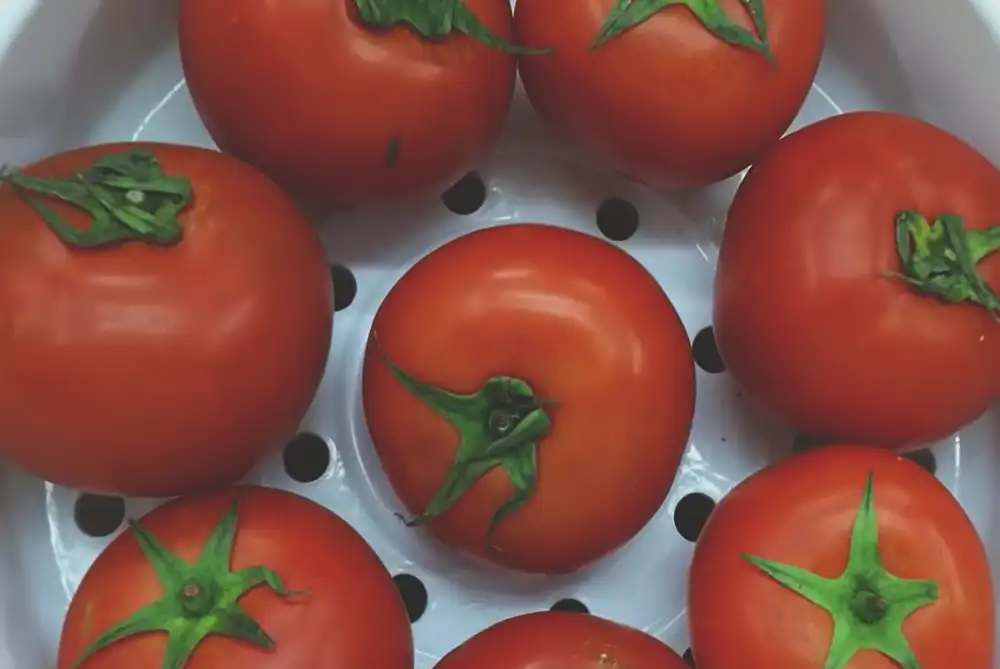
If any tomatoes don’t have stems, use tape to cover the stems to prevent bacteria from entering. You can keep them at room temperature for up to 10 days, but remember to arrange them in a single layer to avoid crushing the fruit. When you’re ready to eat them, just remove the tape, wash, and prepare.
Method 5: Dicing and Freezing Tomatoes
This next method saves time and keeps tomatoes fresher than the first method by dicing them before storing. First, cut off the top and bottom of the tomatoes; these are the parts that are most likely to contain pesticide residue. Then cut the tomatoes into bite-sized cubes, which are great for cooking later.
Tomatoes contain lycopene, an antioxidant that may help reduce the risk of heart disease and support healthy skin. Divide the diced tomatoes into small Ziploc bags. Use a straw to suck out the air, then seal the bags and store them in the freezer. This helps prevent freezer burn and keeps tomatoes fresh longer.
They can last from three to six months, perfect for making sauces or any dish that requires cooked tomatoes. When you need them, take the bag out of the freezer and let it thaw for a few minutes before cooking. After thawing, the tomatoes retain their color and shape.
Method 6: Storing Tomatoes in a Box with Baking Soda
Use toilet paper or newspaper to wrap each tomato tightly. Wrapping the paper reduces the amount of air contact with the tomatoes, retains moisture, and helps the tomatoes stay fresh longer and retain their color.
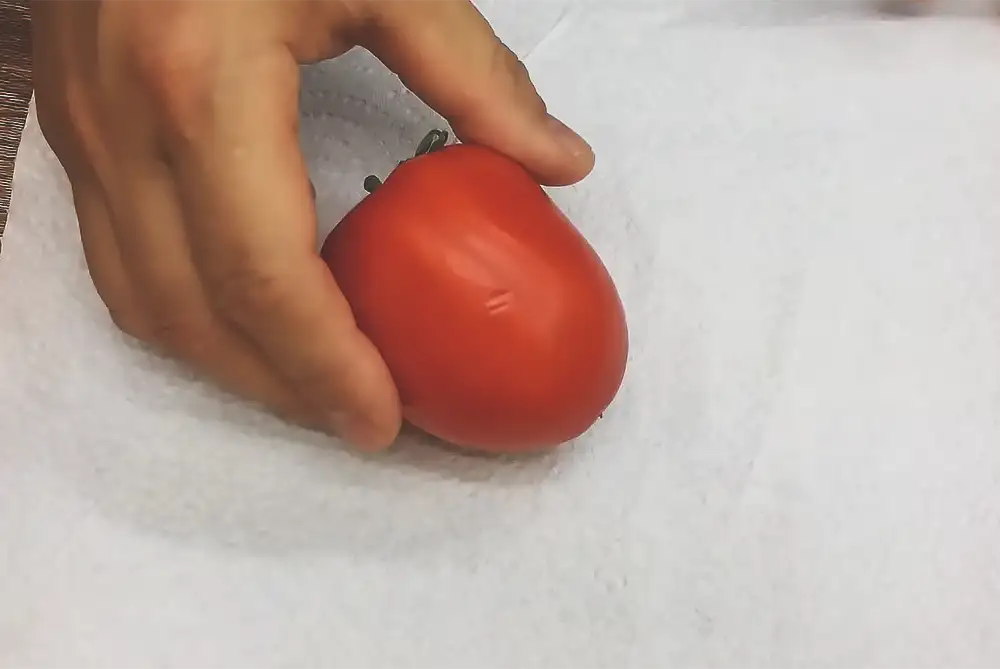
Prepare a paper box. Prepare some edible baking soda and sprinkle a thin layer on the bottom of the box. Baking soda is edible, so it is very safe; it will absorb moisture, helping the tomatoes stay fresh longer. Then, arrange the tomatoes, remembering not to put them too close together.
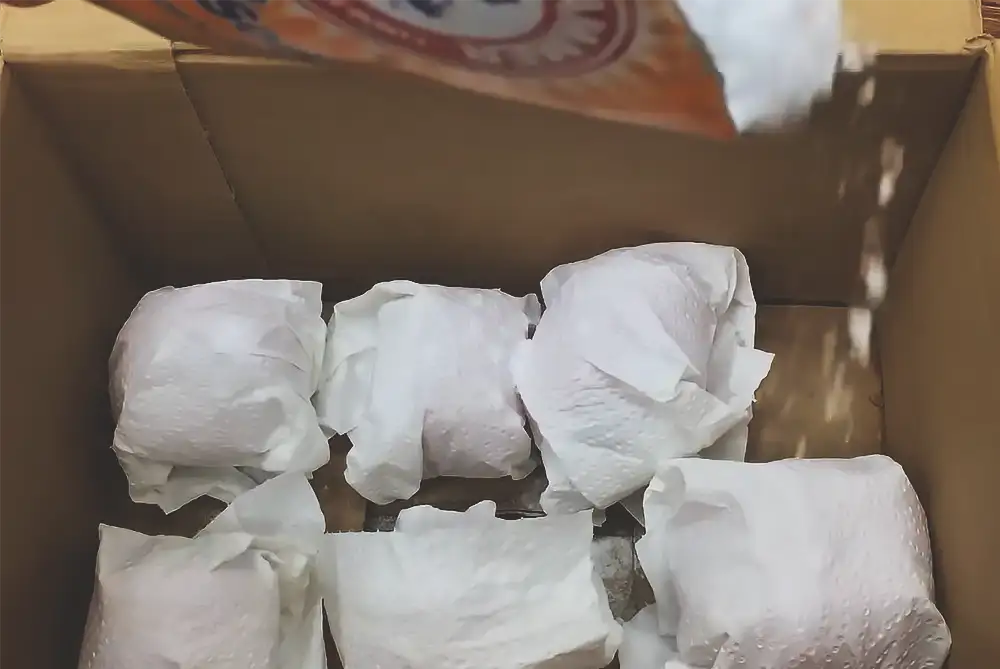
If there are many tomatoes, more cardboard can be put between the layers, and continue to arrange them. With this method, tomatoes can be kept for 1 month at room temperature while still maintaining their flavor and freshness. Finally, close the lid of the box and store in a cool, dry place away from sunlight.
Bonus: Recycling Rotten Tomatoes as Fertilizer
Rotten tomatoes can be used as fertilizer. Prepare a plastic bottle and pour a little rice water into it. If there’s no rice water, regular water can be used; leave about 1 to 2 cm of space at the top. Close the bottle tightly and shake well to mix the tomatoes and water. Place it in a cool, dry place for fermentation for 5 to 7 days. Avoid using glass bottles due to gas pressure. After fermentation, use a sieve to filter the water, which may have small residue.
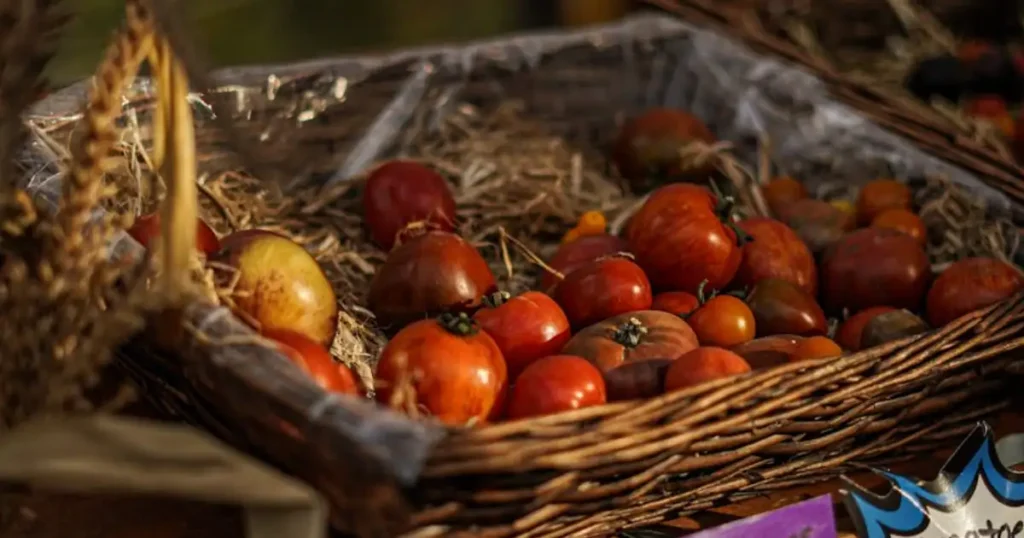
This water can then be used to water plants, flowers, or ornamental plants. Dilute it with water in a ratio of 1 to 5 because it is concentrated. Close the lid of the watering can and shake well. Rotten tomatoes are rich in organic matter and nutrients that benefit plants.
The acid in tomatoes helps adjust the pH of the soil, making it suitable for growth. Rice water is also good for plants, and when combined with fermented tomatoes, it enhances the nutritional value, helping plants germinate and flower well.
For plants with yellow leaves, this solution can help them regain their color. However, it’s important to adjust the usage based on the plant type and environment. Avoid overuse to prevent soil from becoming too rich.
To wrap up, using these methods will help extend the life of your tomatoes, reduce waste, and even provide nutrients for your garden.
Below, you can watch some of these methods live for more details and ideas.
Key Words Used: keep tomatoes fresh longer, Genius Tomato Storage, Tomatoes Storage tips